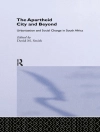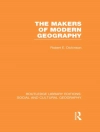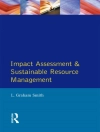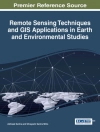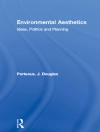The book is the outcome of a unique venture: a team of Chinese geographers and a team of American geographers collaborated on a new Comparative Geography of China and the United States. The book meets a high demand for comparative information about China and the United States, as the home of the two leading economies in a globalizing world. Comparisons of the two countries include the similarities and differences in their physical environments and natural hazards, the growth and changing spatial distribution of population and ethnic groups in China and the U.S., traditions and contemporary regional expressions of agriculture and food production as well as the rapidly changing urban and industrial patterns in both countries. The book also highlights the two countries’ interconnectedness, in trade and in the exchange of cultural, social, scientific & technological information. The volume serves as a major resource in geographic education as it contributes to a better and more comprehensive understanding of the formation and development of the two countries’ basic geographical patterns and processes.
Table of Content
Editors.- Preface.- Acknowledgements.- Chapter 1: Introduction to a Comparative Geography of China and the U.S.; Rudi Hartmann and Jing’ai Wang.- Chapter 2: Physical Geography of China and the U.S.; Jing’ai Wang, Honglin Xiao, Rudi Hartmann and Yaojie Yue.- Chapter 3: Population/ Ethnic Geographies of China and the U.S.; Lucius Hallet IV, Jing’ai Wang and Rudi Hartmann.- Chapter 4: Agriculture and Food Production in China and the U.S.; Mark Leipnik, Yun Su, Robert Lane and Xinyue Ye.- Chapter 5: Economic Geography; Hongmian Gong and Huasheng Zhu.- Chapter 6: International Trade Issues and Status for China and the United States; Gregory Veeck and Yuejing Ge.- Chapter 7: Megaregions of China and the U.S.; Russell M. Smith, Yuejing Ge, Rudi Hartmann, Xiaoping Dong and Yang Cheng.- Chapter 8: Regional Urban Economic Clusters; Susan Walcott and Huasheng Zhu.- Chapter 9: Urbanization, Urban Form and Adaptation: A Comparison of Four US and Chinese Cities; Tao Ye, Brian Muller and Peijun Shi.- Chapter 10: The Main Agricultural Regions of China and the U.S.; Mark Leipnik, Yun Su and Xinyue Ye.- Chapter 11: Research Cooperation between Chinese and American Geographers and its Significance in the Quest for Sustainable Development; Peijun Shi, Clifton W. Pannell and Tao Ye.- Epilogue.- Contributors.- Index.
About the author
Rudi Hartmann is an Associate Professor (C/T) at the University of Colorado Denver where he has taught geography and tourism planning since 1992. He received his Ph.D. from the Technical University Munich, Germany in 1983. His interests include geographic education, the geography of tourism and the history of geographic thought. His regional specialties are China, Europe and the American West. He has visited or taught at Clark University, Worcester, Massachusetts, Lund University, Sweden, University of California, Berkeley, Simon Fraser University, Burnaby, British Columbia, the University of Colorado, Boulder, and Beijing Normal University.
Jing’ai Wang is Professor at the School of Geography, Beijing Normal University, the winner of the national laureate for teaching, the leader of the Regional Geographical Education Team of China, the chair of the board of the “China Geography” Teaching Research Society, deputy director of the Geographical Education Steering Committee ofthe Ministry of Education of China, co-chair of the board of directors of the Society for Geography of Beijing, and the Director of the Key Laboratory of Regional Geographical Research of Beijing Normal University. For several decades, she has been actively engaged in research and teaching in the fields of geographic education, regional geography, natural areas assessment and natural disaster mapping. She was also named project leader of several national programs, National “863” Program, National Natural Science Foundation Project, National “973” Program, and National Key Technology R&D Program of China. She has published and edited many textbooks including “China Geography”, “China Geographical Atlas” and “The Spatial-Temporal Patterns of Natural Disaster in China” as well as written over 200 research papers. Among the classes she teaches is “China Geography”, a nationally recognized course. She is the winner of the First-level Award of National Teaching Achievements, the Second-level Award of National Teaching Achievements, the First Award of Science and Technology Progress of the Ministry of Education, China.



